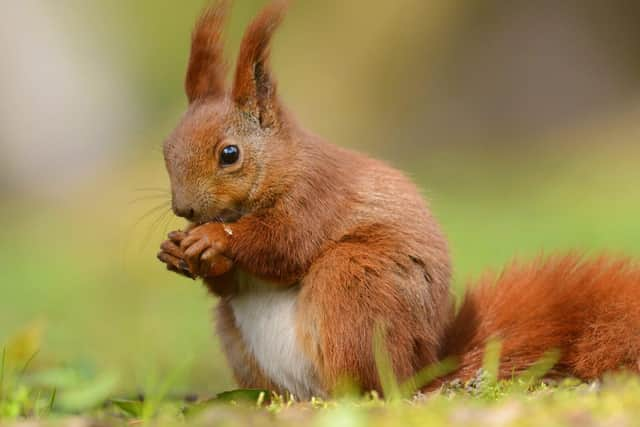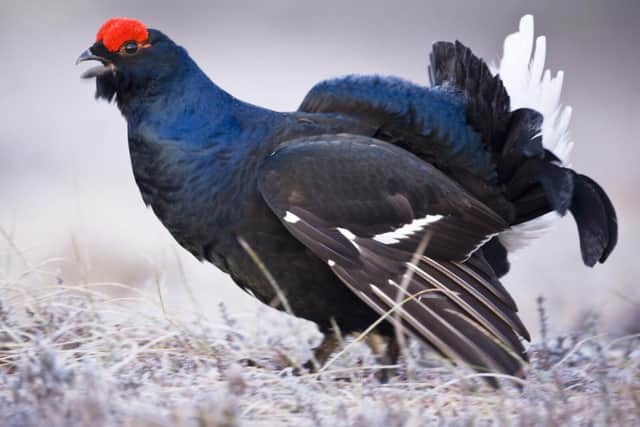The National Trust for Scotland shares top five animals to spot in springtime
This article contains affiliate links. We may earn a small commission on items purchased through this article, but that does not affect our editorial judgement.
and live on Freeview channel 276
Adventure, fun and exploring new places are top of the to-do list at the National Trust for Scotland’s special places this spring. With landscapes famed for their array of flora and fauna, in the springtime Scotland is the perfect destination to see the seasonal wildlife emerge from its winter slumber.
To help keen explorers make the most of their adventures, Scotland’s largest conservation charity, the National Trust for Scotland, has shared its springtime guide to some of the best places in Scotland to spot the nation’s incredible wildlife.
Advertisement
Hide AdAdvertisement
Hide AdOtters – One of the most popular but shy Scottish animals can be found at Inverewe Garden, in the North West Highlands. Make sure to stay as quiet as possible, though, as otters have an excellent sense of hearing and acute sense of smell. The Inverewe bird hide is a perfect spot to catch a glimpse of an otter, or take a boat trip from the jetty to spot them around the peninsula.


Puffins – With spring round the corner, puffins will return from their time at sea to the same nest burrow which they used the previous year, and spring cleaning will commence as they prepare for egg laying in mid-April. The male puffin uses his feet and beak to dig a two-room burrow, and helpfully, he also does all the spring cleaning before his partner arrives. The Treshnish Isles are a fantastic place for birdwatching as the clifftops make for perfect burrow sites.
Visitors to the Treshnish Isles (and Staffa too) are asked to leave dogs at home, especially during the seabird season from 1 April to 30 September, to help avoid stressing seabird populations which are already under pressure from other threats. Visitors are also reminded to give seabirds space by maintaining a good distance to avoid disturbing nests and burrows.
Black Grouse - The ancient pinewoods of Mar Lodge Estate are home to the rare black grouse. Early mornings in springtime provide the best opportunity to see their famous, swaggering courtship displays known as leks, which take place in open areas away from the woods. The all-black males are identifiable by a distinctive red wattle over their eye and show a striking white stripe along each wing in flight. As these are a rare species, the Trust encourages everyone to admire from a distance.
Advertisement
Hide AdAdvertisement
Hide AdRed Squirrels - The natural habitat at Threave is great for red squirrels, with plenty of food sources like nuts, seeds, berries and mushrooms available, while a close tree canopy in the woods allows the squirrels to easily travel from tree to tree as well as offer good areas for nest building. Perfect for springtime strolls, the leafy woodland at The Hermitage or the grounds at Brodie and Brodick Castles are also home to these playful creatures.


The flash of a red squirrel leaping from branch to branch is an unforgettable sight but they can be shy and very quick, so watch from a distance if you’re looking to snap a picture.
Pine Martens – Maybe the trickiest animal to spot, pine martens are known for being shy and often nocturnal, leaving evidence of their presence in the form of footprints or droppings. Brilliant climbers thanks to their long bushy tails and strong claws, they live at a variety of National Trust for Scotland properties, including Mar Lodge Estate, Crathes Castle and Killicrankie, and be sure to check high and low, both in trees and on the ground. Keep an eye out for their distinct five toed footprint, around 5cm by 6cm in size, to get a chance to see one of Scotland’s most elusive creatures!
Emily Wilkins, National Trust for Scotland Ranger for Burg, Iona and Staffa, said: “With springtime arriving, we’re excited to see some of our favourite wildlife begin to resurface and make the most of the warmer weather. There’s an array of different species visible at the special places in our care across Scotland, from woodland creatures to aquatic mammals and coastal seabirds. Some of the most remarkable wildlife call our country home and we’re excited to share them with our visitors. It is thanks to the generous support of our members and supporters that our charity is able to continue our work to care for and protect Scotland’s nature, beauty and heritage, now and for future generations to enjoy.”
For more information on the National Trust for Scotland, or the sites near you, visit: www.nts.org.uk.